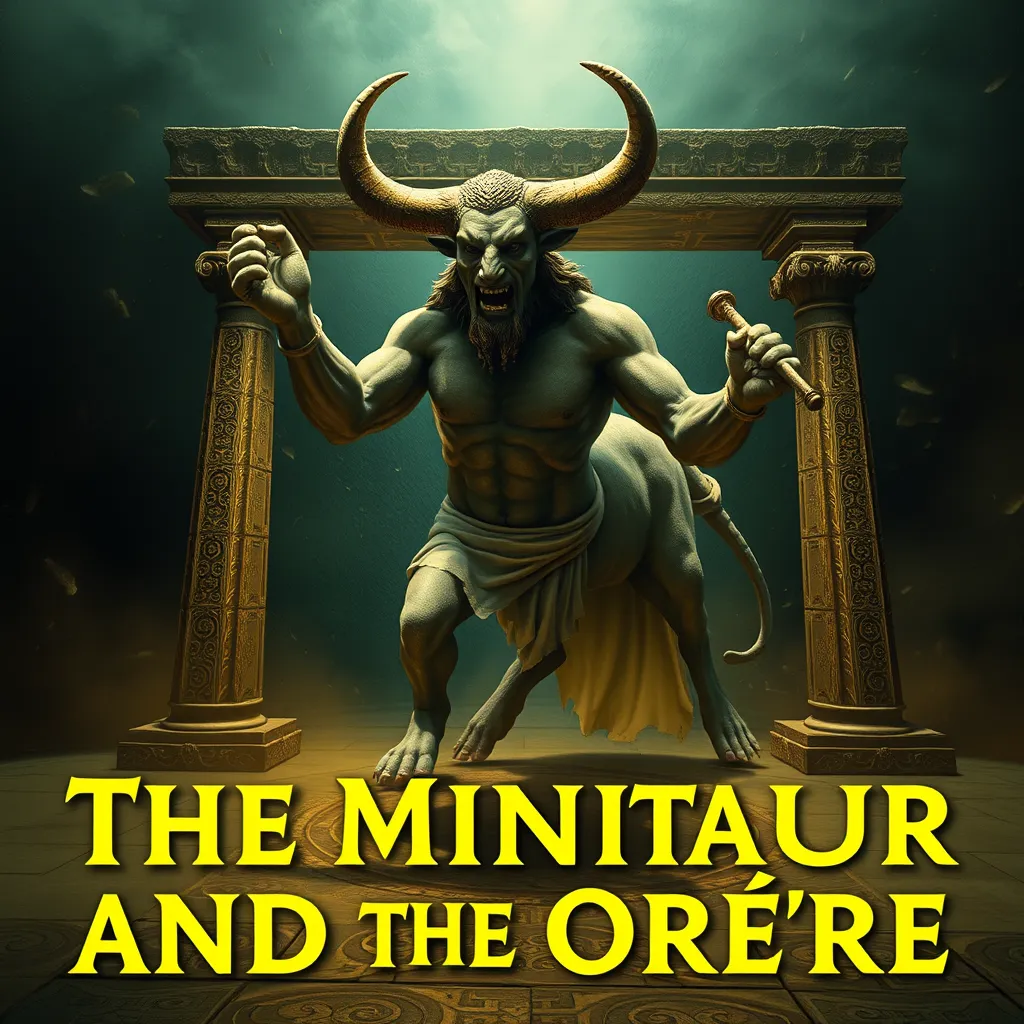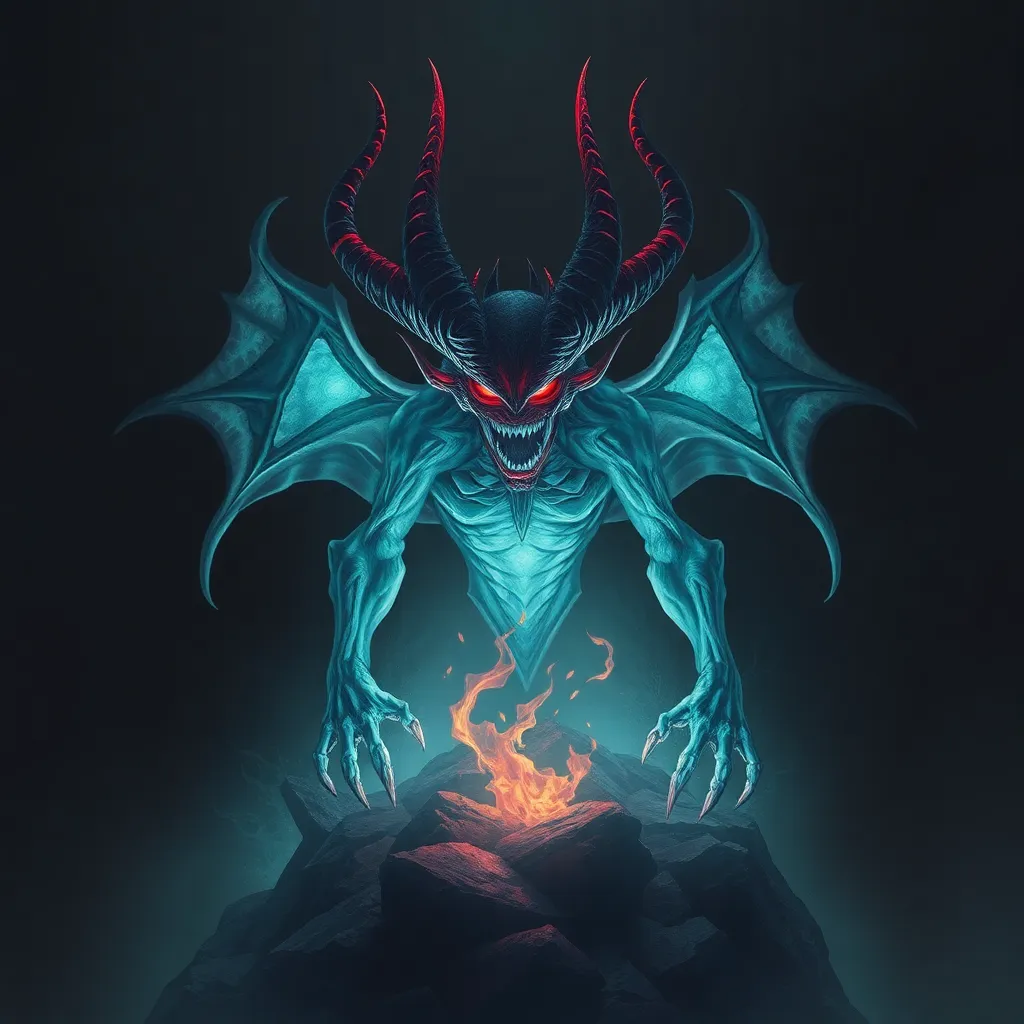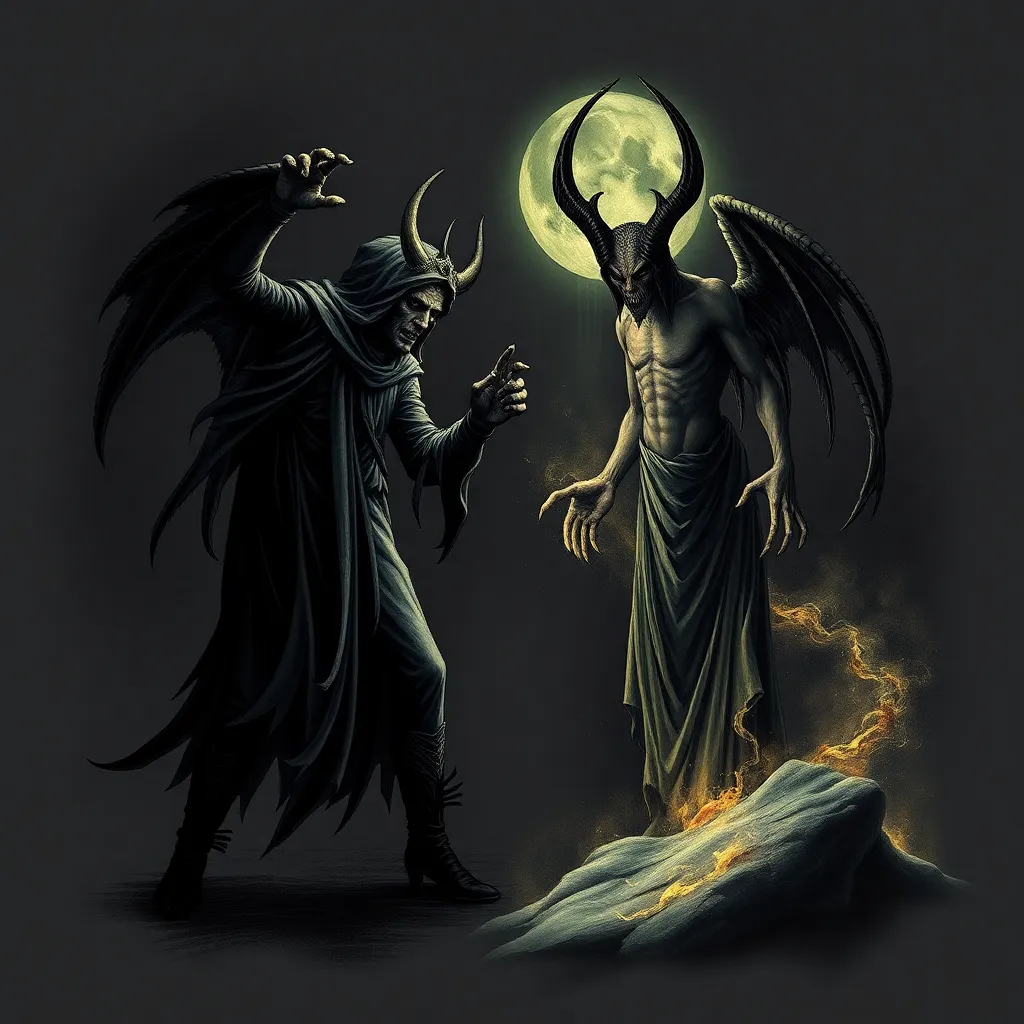The Minotaur and the Oracle: Examining the Monster’s Connection to Prophecy and Fate
I. Introduction
The myth of the Minotaur is one of the most enduring tales from Greek mythology, captivating audiences with its themes of monstrosity, fate, and the human condition. The Minotaur, a creature that is half-man and half-bull, resides in the Labyrinth, a complex maze designed by the architect Daedalus. Its existence is intricately linked to the fate of those who encounter it, particularly the young Athenians sacrificed to appease King Minos of Crete.
In ancient Greece, the Oracle of Delphi held significant importance as the most renowned source of prophecy and divine guidance. The Oracle, believed to be the mouthpiece of the god Apollo, provided insights that shaped the destinies of individuals and cities alike. This article aims to explore the connection between the Minotaur, prophecy, and fate, revealing how these elements intertwine within the mythological narrative.
II. The Myth of the Minotaur
A. Origin story of the Minotaur
The Minotaur’s origin can be traced back to a curse placed upon Queen Pasiphaë of Crete. Desiring the bull sent to King Minos by Poseidon, she was transformed into a monstrous form of desire, leading to the birth of the Minotaur. The creature was not only a product of unnatural union but also a reflection of the chaos that ensued from disregarding divine will.
B. The role of King Minos and the Labyrinth
King Minos, determined to hide his shameful offspring, commissioned the construction of the Labyrinth, a vast and intricate maze that would prevent the Minotaur from escaping. The Labyrinth symbolizes the complexities of fate; those who entered were often trapped, much like the characters ensnared by their own destinies.
C. The Minotaur as a symbol of chaos and monstrosity
The Minotaur represents the chaos inherent in human nature and the monstrosity that arises when one strays from the path of righteousness. It serves as a reminder of the consequences of hubris and the importance of acknowledging one’s place within the cosmic order.
III. The Oracle of Delphi: A Gateway to Prophecy
A. Historical significance of the Oracle in Greek society
The Oracle of Delphi was revered as the most powerful oracle in ancient Greece, attracting pilgrims from all over the world who sought guidance on various matters, from personal dilemmas to state affairs. Its influence extended across the Mediterranean, shaping the decisions of leaders and commoners alike.
B. Functions of the Oracle in providing guidance and prophecy
The Oracle served several functions:
- Providing prophetic insights into individual lives and future events.
- Guiding city-states in matters of war, peace, and religious practices.
- Offering advice on colonization, trade, and diplomatic relations.
C. Key figures involved with the Oracle and their fates
Notable figures such as Croesus, the wealthy king of Lydia, and Oedipus, the tragic hero, sought the Oracle’s counsel. Their stories illustrate the profound impact of prophecy on personal and political destinies, often leading to unforeseen consequences.
IV. Intertwining Fates: The Minotaur and the Oracle
A. The prophecy surrounding the Minotaur’s existence
The Minotaur’s existence was foretold through a series of prophecies that warned of the dire consequences of King Minos’s actions. These prophecies set the stage for the inevitable clash between fate and free will.
B. Connections between the Oracle’s predictions and the Minotaur’s story
The Oracle’s predictions often foreshadowed the tragedies that befell those who encountered the Minotaur. The hero Theseus, destined to confront the beast, exemplifies the tension between embracing one’s fate and attempting to alter it.
C. The relationship between fate and free will in the myth
The Minotaur myth encapsulates the struggle between fate and free will. While the characters are bound by prophecy, their choices significantly influence the outcomes of their stories, leading to a complex interplay that highlights the uncertainty of human existence.
V. The Role of Fate in the Minotaur’s Myth
A. Examination of the concept of fate in Greek mythology
Fate, or Moira, is a central theme in Greek mythology, representing the predetermined course of events that govern mortal lives. The Moirai, or Fates, were depicted as weaving the threads of destiny for each individual, emphasizing the inevitability of fate.
B. How fate is portrayed in the Minotaur’s narrative
In the Minotaur’s narrative, fate is portrayed as an inescapable force. From the circumstances of the Minotaur’s birth to the sacrifices demanded by King Minos, every element of the story reinforces the notion that certain events are beyond human control.
C. Consequences of attempting to defy fate
Attempts to defy fate often lead to tragic outcomes, as seen in the stories of characters like Icarus and Oedipus. The Minotaur serves as a cautionary tale about the dangers of hubris and the futility of resisting one’s destiny.
VI. The Minotaur as a Reflection of Human Struggles
A. The Minotaur as a metaphor for inner demons and societal fears
The Minotaur can be interpreted as a metaphor for the inner demons that individuals face, representing the chaos and monstrosity that lurks within. It reflects societal fears of the unknown and the consequences of unchecked desires.
B. Connections to the themes of destiny and prophecy in human life
Like the characters in the Minotaur myth, individuals today grapple with the concepts of destiny and prophecy in their lives. The struggle to balance free will with the forces that shape one’s path is a universal theme that resonates across cultures.
C. The relevance of the Minotaur’s story in contemporary discussions of fate
The story of the Minotaur remains relevant in contemporary discussions about fate, free will, and the human condition. It prompts reflection on the choices we make and the consequences that arise from them, inviting us to consider how much control we truly have over our lives.
VII. Comparative Analysis with Other Mythological Figures
A. Similarities between the Minotaur and other mythological monsters
Like the Minotaur, other mythological figures such as the Sphinx and Cerberus also embody the themes of chaos and the unknown. Each monster serves as a guardian of thresholds, testing the worthiness of those who seek to pass.
B. The role of prophecy in the stories of figures like Oedipus and Perseus
Oedipus and Perseus are also deeply intertwined with prophecy. Oedipus’s tragic fate is sealed by a prophecy he tries to avoid, while Perseus’s destiny is shaped by divine intervention and guidance, showcasing the multifaceted nature of fate and prophecy in Greek mythology.
C. How these connections deepen the understanding of fate in mythology
By examining these figures in relation to the Minotaur, we gain a deeper understanding of how fate operates within mythology. The recurring themes of prophecy, struggle, and human agency reveal the complexities of the human experience and the timeless nature of these stories.
VIII. Conclusion
In summary, the Minotaur and the Oracle of Delphi are emblematic of the intricate relationship between prophecy and fate in Greek mythology. The story of the Minotaur serves as a powerful metaphor for human struggles, illustrating the tension between free will and predetermined destiny.
The enduring legacy of these myths continues to resonate, informing contemporary discussions about the nature of fate and the choices we make. As we explore these narratives, we are reminded of the profound impact that mythology has on our understanding of the human experience and the eternal quest for meaning in our lives.



